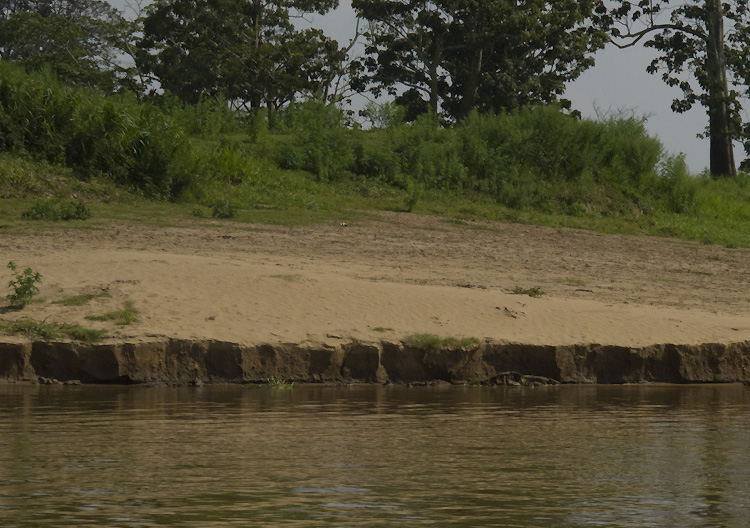Alluvial Gravels at the Blue Ribbon Mine Alaska.jpg on:
[Wikipedia]
[Google]
[Amazon]



 Alluvium (from Latin ''alluvius'', from ''alluere'' 'to wash against') is loose clay, silt, sand, or
Alluvium (from Latin ''alluvius'', from ''alluere'' 'to wash against') is loose clay, silt, sand, or


 Alluvium (from Latin ''alluvius'', from ''alluere'' 'to wash against') is loose clay, silt, sand, or
Alluvium (from Latin ''alluvius'', from ''alluere'' 'to wash against') is loose clay, silt, sand, or gravel
Gravel is a loose aggregation of rock fragments. Gravel occurs naturally throughout the world as a result of sedimentary and erosive geologic processes; it is also produced in large quantities commercially as crushed stone.
Gravel is classifi ...
that has been deposited by running water in a stream bed, on a floodplain, in an alluvial fan or beach, or in similar settings. Alluvium is also sometimes called alluvial deposit. Alluvium is typically geologically young and is not consolidated
Consolidated may refer to:
*Consolidated (band)
**'' ¡Consolidated!'', a 1989 extended play
*Consolidated Aircraft (later Convair), an aircraft manufacturer
*Consolidated city-county
*Consolidated Communications
* Consolidated school district
*Co ...
into solid rock. Sediments deposited underwater, in seas, estuaries, lakes, or ponds, are not described as alluvium.
Floodplain alluvium can be highly fertile, and supported some of the earliest human civilizations.
Definitions
The present consensus is that "alluvium" refers to loose sediments of all types deposited by running water infloodplains
A floodplain or flood plain or bottomlands is an area of land adjacent to a river which stretches from the banks of its channel to the base of the enclosing valley walls, and which experiences flooding during periods of high discharge.Goudi ...
or in alluvial fans or related landforms
A landform is a natural or anthropogenic land feature on the solid surface of the Earth or other planetary body. Landforms together make up a given terrain, and their arrangement in the landscape is known as topography. Landforms include hills, m ...
. However, the meaning of the term has varied considerably since it was first defined in the French dictionary of Antoine Furetière
Antoine Furetière (28 December 161914 May 1688) was a French scholar, writer, and lexicographer, known best for his satirical novel ''Scarron's City Romance''. He was expelled from the Académie Française for seeking to publish his own French ...
, posthumously published in 1690. Drawing upon concepts from Roman law, Furetière defined '' alluvion'' (the French term for alluvium) as new land formed by deposition of sediments along rivers and seas. By the 19th century, the term had come to mean recent sediments deposited by rivers on top of older '' diluvium'', which was similar in character but interpreted as sediments deposited by Noah's flood. With the rejection by geologists of the concept of a primordial universal flood, the term "diluvium" fell into disfavor and was replaced with "older alluvium". At the same time, the term "alluvium" came to mean all sediment deposits due to running water on plains. The definition gradually expanded to include deposits in estuaries and coasts and young rock of both marine and fluvial
In geography and geology, fluvial processes are associated with rivers and streams and the deposits and landforms created by them. When the stream or rivers are associated with glaciers, ice sheets, or ice caps, the term glaciofluvial or fluviog ...
origin.
Alluvium and diluvium were grouped together as '' colluvium'' in the late 19th century. However, "colluvium" is now generally understood to mean sediments produced by gravity-driven transport on steep slopes, while the definition of "alluvium" has switched back to an emphasis on sediments deposited by river action. There continues to be disagreement over what other sediment deposits should be included under the term "alluvium."
Age
Most alluvium isQuaternary
The Quaternary ( ) is the current and most recent of the three periods of the Cenozoic Era in the geologic time scale of the International Commission on Stratigraphy (ICS). It follows the Neogene Period and spans from 2.58 million years ...
in age and is often referred to as "cover" because these sediments obscure the underlying bedrock
In geology, bedrock is solid Rock (geology), rock that lies under loose material (regolith) within the crust (geology), crust of Earth or another terrestrial planet.
Definition
Bedrock is the solid rock that underlies looser surface mater ...
. Most sedimentary material that fills a basin ("basin fill") that is not lithified is typically lumped together as "alluvial". Alluvium of Pliocene age occurs, for example, in parts of Idaho. Alluvium of late Miocene age occurs, for example, in the valley of the San Joaquin River, California.
See also
*Alluvial plain
An alluvial plain is a largely flat landform created by the deposition of sediment over a long period of time by one or more rivers coming from highland regions, from which alluvial soil forms. A floodplain is part of the process, being the sma ...
* Bay mud
Bay mud consists of thick deposits of soft, unconsolidated silty clay, which is saturated with water; these soil layers are situated at the bottom of certain estuaries, which are normally in temperate regions that have experienced cyclical glacia ...
* Braided stream
* Desert pavement
* Eluvium
* Hydraulic action
* Illuvium
References
{{authority control Sedimentology